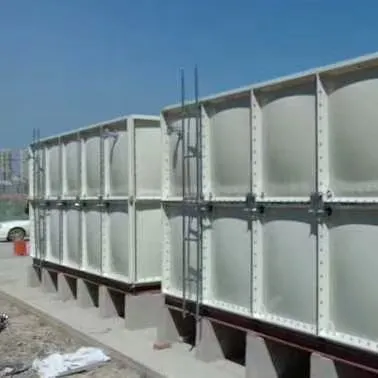loading...
- No. 9, Xingyuan South Street, Dongwaihuan Road, Zaoqiang County, Hengshui, Hebei, China
- admin@zjcomposites.com
- +86 15097380338
- Welcome to visit our website!
Innovative FRP Panels for Enhanced Bridge Deck Performance and Durability
The Benefits of FRP Bridge Deck Panels A Modern Solution for Infrastructure
In today's rapidly evolving infrastructure landscape, the need for durable, lightweight, and cost-effective materials has become paramount. One such innovative solution gaining traction in bridge construction is the use of Fiber-Reinforced Polymer (FRP) bridge deck panels. These advanced materials are reshaping the way engineers and construction teams approach bridge design and maintenance.
What are FRP Bridge Deck Panels?
FRP bridge deck panels are composite materials made from a polymer matrix reinforced with fibers, typically glass or carbon. This combination results in a product that boasts remarkable strength-to-weight ratios and durability compared to traditional materials like concrete and steel. The lightweight nature of FRP allows for easier handling and installation, reducing construction time and labor costs.
Advantages of FRP Over Traditional Materials
One of the standout advantages of FRP bridge deck panels is their resistance to corrosion. Traditional bridge materials suffer from deterioration due to harsh weather conditions, road salts, and other environmental factors. In contrast, FRP is inherently resistant to chemical and biological agents, making it an ideal choice for areas prone to corrosion. This characteristic extends the lifespan of bridges significantly, reducing the frequency and cost of maintenance.
Moreover, FRP panels are non-magnetic and have excellent thermal insulating properties, which can be beneficial in various environments. Their lightweight nature not only simplifies installation but also translates to reduced loads on supporting structures, allowing for the design of more efficient bridge systems.
Sustainability and Environmental Considerations
Sustainability is increasingly becoming a critical factor in infrastructure projects. The production of FRP materials can be more environmentally friendly than traditional concrete and steel, as they often require less energy to manufacture. Additionally, their longevity means fewer resources are consumed over the life cycle of the bridge. Recycling capabilities of FRP composites are improving, further enhancing their sustainability profile.
frp bridge deck panels

Case Studies and Applications
Numerous bridge projects worldwide have successfully incorporated FRP bridge deck panels. For instance, the use of FRP in pedestrian and transit bridges has noted a marked increase in durability while decreasing overall maintenance costs. One remarkable example is a footbridge in New York, which utilized FRP decking to withstand the city’s harsh weather conditions without compromising aesthetics or safety.
Another application is in the retrofit of existing bridges, where FRP panels are used to replace deteriorating decks. This process not only prolongs the life of the bridge but also minimizes traffic disruption, as the lightweight panels can be quickly installed.
The Future of FRP in Bridge Construction
As technology advances, the manufacturing processes for FRP materials are expected to improve, driving down costs and enhancing performance characteristics. Research continues into various formulations of FRP, exploring the use of alternative fibers and resins that can provide additional benefits, such as increased fire resistance or enhanced structural properties.
Furthermore, as more engineers and contractors recognize the advantages of FRP, its application in bridge construction will likely expand. Training programs and educational initiatives are essential to equip industry professionals with the knowledge necessary to implement these materials effectively in future projects.
Conclusion
Fiber-Reinforced Polymer bridge deck panels present a forward-thinking solution to numerous challenges faced in bridge construction and maintenance. Their unique properties offer durability, lightweight benefits, and corrosion resistance, creating a more sustainable infrastructure. As the industry continues to innovate and embrace these materials, FRP is poised to play a critical role in the bridges of tomorrow, ensuring safer and more resilient transport for communities worldwide.
-
GRP Structures: The Future of Lightweight, High-Performance EngineeringNewsJun.20,2025
-
FRP Water Tank: High-Performance Storage for Corrosive and Clean Water SystemsNewsJun.20,2025
-
FRP Square Tube: The New Industry Standard for Chemical and Structural ApplicationsNewsJun.20,2025
-
FRP Pultruded Profiles: The Ultimate Choice for Lightweight Structural StrengthNewsJun.20,2025
-
FRP Handrails: The Safer, Smarter, and Stronger Choice for Modern InfrastructureNewsJun.20,2025
-
FRP Grating: The Smart Solution for Durable, Lightweight Industrial FlooringNewsJun.20,2025
-
Why Choose a Galvanized Water Tank for Your Storage NeedsNewsMay.21,2025
